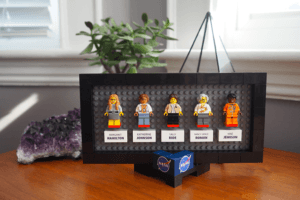LEGO Ideas – Attracting creative builders

Outsourcing product ideation
Even under increasing pressure from other toy manufacturers, LEGO, in 2018, continues to be among the world’s most valuable brands according to consulting firm Brand Finance [1]. Since it’s near bankruptcy and subsequent turnaround in 2004, Lego has experiences years of consecutive growth, but is now facing increasing pressures as sales started to fall in 2017 [2].
LEGO first began leveraging external crowds in 2008 in Japan with a collaboration with Cuusoo [3]. The platform, which eventually came to be LEGO Ideas, encourages LEGO fans to create and propose projects for new LEGO sets. The core of this initiative is the webpage created by LEGO (https://ideas.lego.com/), which enables community members to submit ideas, comments and vote for other’s proposals.
The company incentivizes participation primarily by leveraging their fan base. In addition, in order for a project to be considered for review, it has to reach 10,000 supporters within the platform [4], thus encouraging the use of the “right fan sites, blogs, and online communities”. In order to vote, users have to become members of the community, increasing the engagement and understanding of the community. As proposers seek supporters for their projects, the community grows. In order to incentivize participation while within the platform, LEGO Ideas uses “Clutch Power”. This is comprised of points and badges that generate competition and reward behaviors that are valuable to the company in four main categories: individual, community, promotion and ideation [5].
A monetary incentive is also part of the tools LEGO Ideas uses to motivate participation. If a project is reviewed and approved for production, the creator will receive “1% of total net sales of the product” and credit as the set creator [6].
Although creativity is the main value the company gets from this crowdsourcing strategy, it is important for them to set clear boundaries to ensure they do not lose control. In this regard LEGO clearly defines the “Project Guidelines and House Rules” [6]. Thus, they are able to ensure that proposals are aligned with the company’s brand strategy and mission and facilitate comparison of proposals through standardize means of presentation.
So far, LEGO Ideas has proven to create value for the company. Since 2008, 20 sets created through this channel have made it to shelves, with 13 of them sold out. Moreover, LEGO is able to gather information on market interests and trends, while at the same time interacting with customers and raising awareness for the brand through media coverage of the projects. On the other hand, LEGO Ideas creates value for the community as it offers a space to share ideas and be part of something bigger. This is demonstrated by recent projects related to NASA and space themes; Maia Weinstock’s Project Women of NASA was created because of her goal to “help inspire children and to add more female role models to the toy aisle.” [7]
Value capturing for the company is based on the sales generated and the brand awareness created. The community member, captures value through the 1% of net sales and recognition of their work.
Although there are currently 1,962 ideas gathering support, several challenges arise. In 2015, for the first time, LEGO Ideas was unable to approve any project for production. In 2017 this happened again [8]. The company communicated this message through a video in You Tube where they tried to explain the reasons behind the outcome. There is a clear challenge and conflict in the amount of information they could disclose and their relationship with the community. No specific reason is given and somewhat conflicting explanations such as similar “new products currently in development” are cited, which highlights the importance of trust in a platform where ideas are being shared. The trade-off between transparency and confidentiality is thus an important hurdle to overcome.
Even in light of clear challenges, LEGO Ideas continues to provide value. The new Tron Legacy Light Cycle to be launched in 2018 is clear proof that the company is gaining valuable insights from the community. In addition, the beta testing of a new concept known as LEGO Contests [9], a new crowdsourcing effort which is focused on specific needs of the company but leverages the community’s creativity, shows the company still believes in the creative value of their crowdsourcing efforts.
[1]http://brandfinance.com/images/upload/bf_global2018_500_website_locked_final_spread_02.02.18.pdf
[3] http://www.kilkku.com/blog/2015/07/crowdsourcing-in-the-toy-industry-lego-ideas/
[4] https://ideas.lego.com/howitworks
[5] https://ideas.lego.com/clutchpower
[6] https://ideas.lego.com/guidelines
[7] https://crowdsourcingweek.com/blog/woman-nasa-creator-maia-weinstock-lego-ideas/
[8] https://www.youtube.com/watch?v=oOZPnLjakOQ
[9] https://ideas.lego.com/challenges/1b817aba-3990-4e6d-a17f-7a59a948d02f/brief




Interesting post! Given the extremely low number of ideas that make it all the way through the funnel to production, I’m wondering how much of the value created by this platform actually has to do with identifying new products compared to the positive brand sentiment that comes from just creating and fostering this community. I would imagine that the creators of most of the projects on the site have no illusions that their project is going to make it to production. But even ideas that don’t garner many supporters seem to receive a number of positive comments from fellow Lego fans – that alone may help the brand to keep their most loyal fans engaged!